
Gardeners have been debating what is meant by the term ‘wild garden’ ever since William Robinson published his influential book titled The Wild Garden in 1870. Maybe gardeners were pondering it before then but Robinson’s book opened the floodgates of dissent. The opposing faction was led by architect Reginald Blomfield who loved the prevailing formal garden style with symmetry and straight lines. Heated arguments ensued and the public took sides.
The antithesis of the wild garden was the prevailing formal Victorian style of bedding out of annual plants called carpet bedding (for its resemblance to a Persian carpet). Newly introduced, highly colored annual plants were arranged into geometric patterns. The plants were meticulously grown in heated greenhouses, planted out for the warm months, and the plant pattern was killed by frost in the autumn.

Robinson suggested that carpet bedding was in bad taste and that it would be better to use hardy (frost tolerant) plants and self-sowing volunteer plants and to let them intermingle in a flower bed. Of course, going against the establishment meant that he got a lot of hate mail. However, with his friend and fellow garden writer Gertrude Jekyll they started a movement in gardening that today often involves the informal style that he was proposing.
Fast forward to the current century and I am seeing a real love affair with the wild or naturalistic garden. Look at the rise in meadow plantings, woodland gardens, and rockeries. All of these garden types have ticked along for decades, but now they are the hottest things.
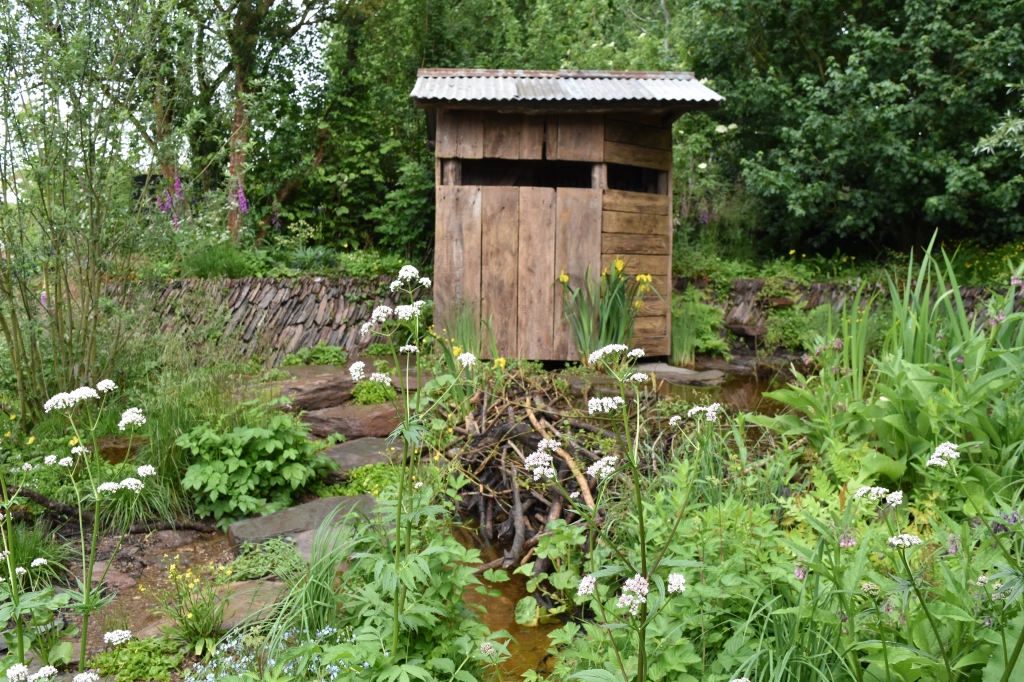
In my garden travels this year I have seen a tendency for gardens to be freer in planting style, with packed plants that mingle together. Maybe it is a natural outgrowth (pun intended) of the awareness that we share our outdoor spaces with a whole ecosystem of creatures and they need some wildness. Or maybe it is a pandemic-induced awareness that we cannot control everything in our lives – maybe not even our gardens? Taking that same line of thought; is there a general relaxation going on in the gardening world akin to the fashion industry where sweatpants and pajamas rule the scene? Whatever you would like to call it and whatever the reasons the trend towards relaxed planting styles is here.
At the renowned Royal Horticultural Society’s (RHS) Chelsea Flower Show this May, there was an overall feeling of wild planting. Best in Show for the highest ranking gold medal in the main show gardens went to A Rewilding Britain Landscape by Lulu Urquhart and Adam Hunt. It featured a loose, informal planting style and native British willows and wildflowers. To be honest, it looked less like a prize-winning show garden and more like a slice of the English countryside. It had a serious message about taking care of our wild areas and because of that, I am sure that the judges rewarded it with extra points. It is also a strong idea that is being promoted by the RHS across its platforms so it would make sense that this wild garden was a winner.
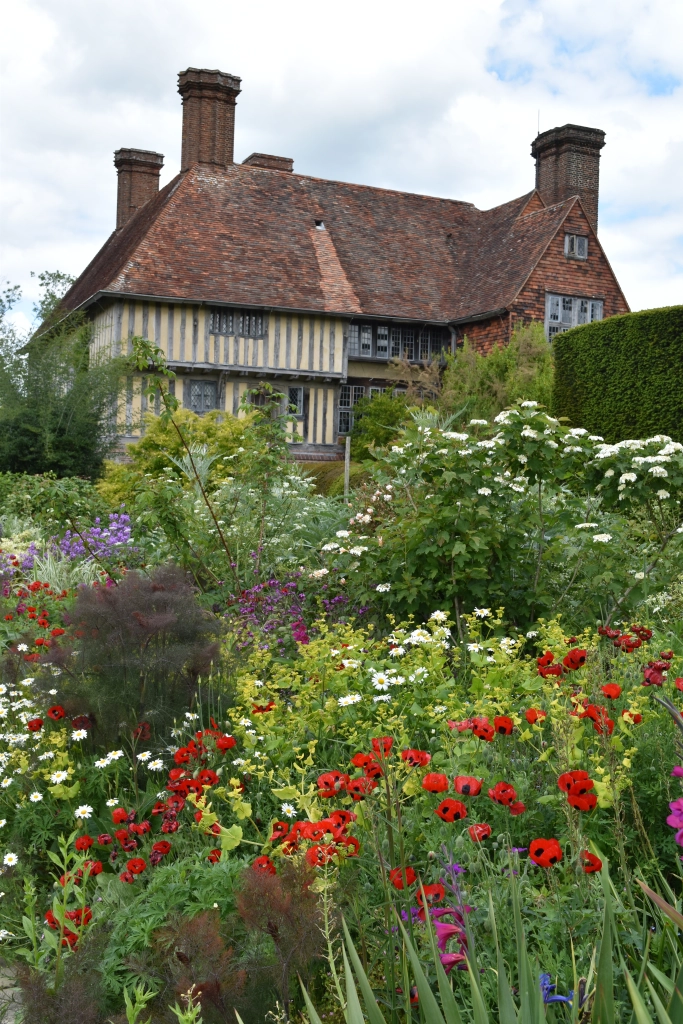
When I visited Great Dixter, in East Sussex, England, the borders were in full May bloom. They are known for their intricate planting schemes where one patch of ground gets several occupants during the course of the year. This year there was a lovely, bright red flowering of the Ladybird Poppy – Papaver commutatum. First Christopher Lloyd and now Fergus Garrett have been at the forefront of the meadow-movement – as shown by their iconic meadow near the front gate that now contains rare hardy orchids.
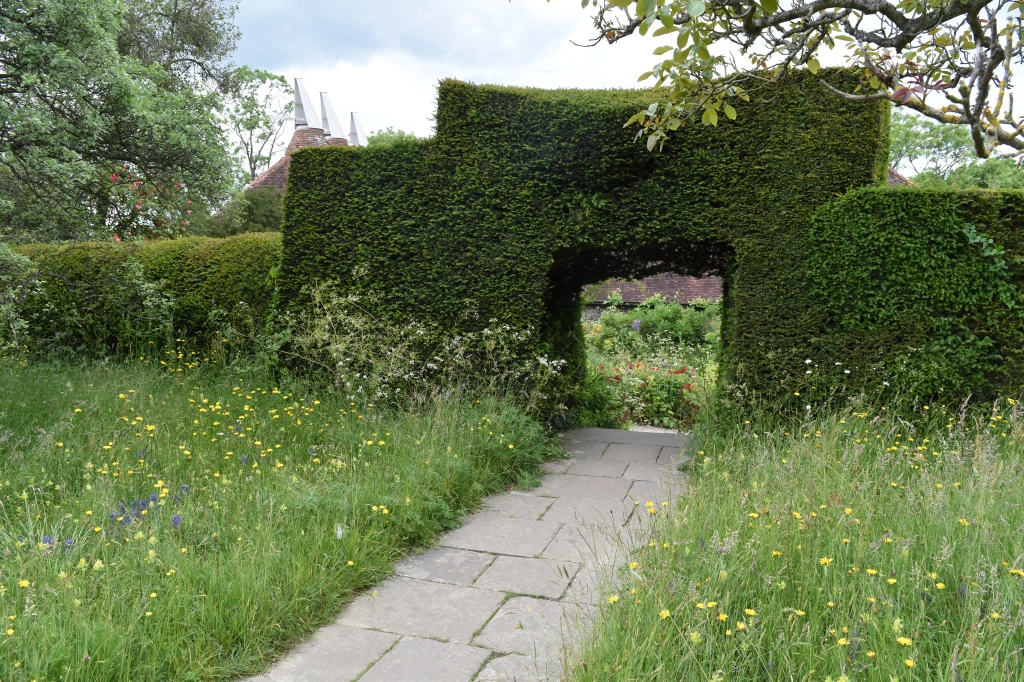
Chanticleer, in Wayne, Pennsylvania produced a serpentine of cornflowers that mirrored the bright blue of the sky on the day that I visited. An occasional bright red poppy leapt out at me from the sea of blue.

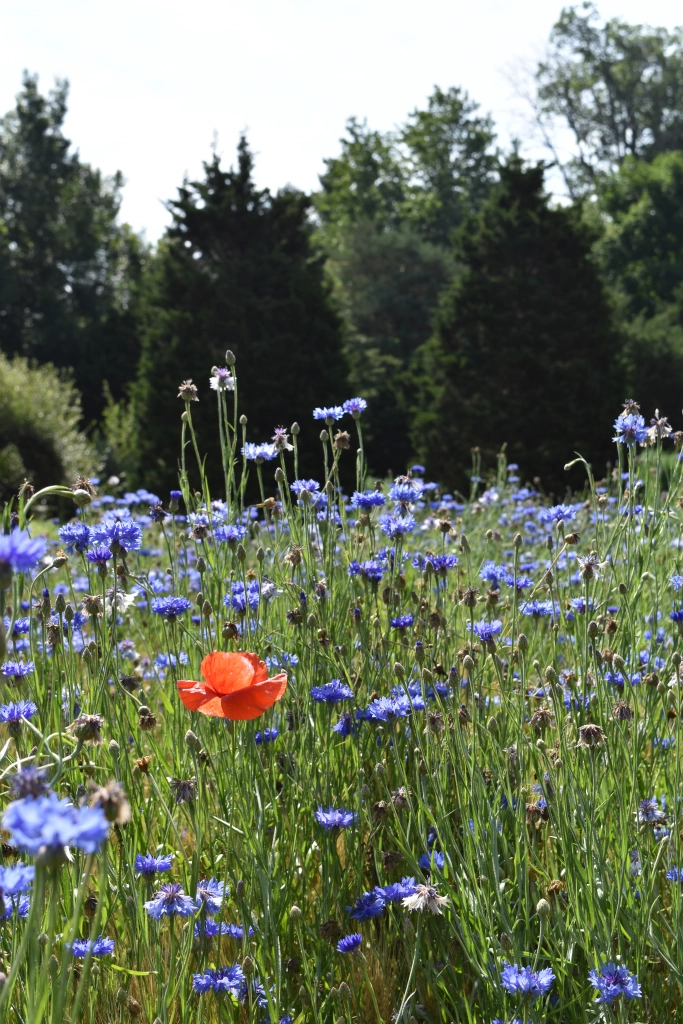
I made two visits this year to the Royal Horticultural Society’s Garden, Wisley, Trial Garden. The photos below show the tiny seedlings in May and a fully blooming garden as the photo in July shows. This highlights the sometimes rapid growth and constant change in this type of annual wild garden. One section of the garden contained hot-colored flowers and a different section was a cool one. Both were a feast for the eyes, and the ears. The flowers were buzzing with pollinators and there were oohs and ahhs of delight when people saw the colorful, varied flowers.

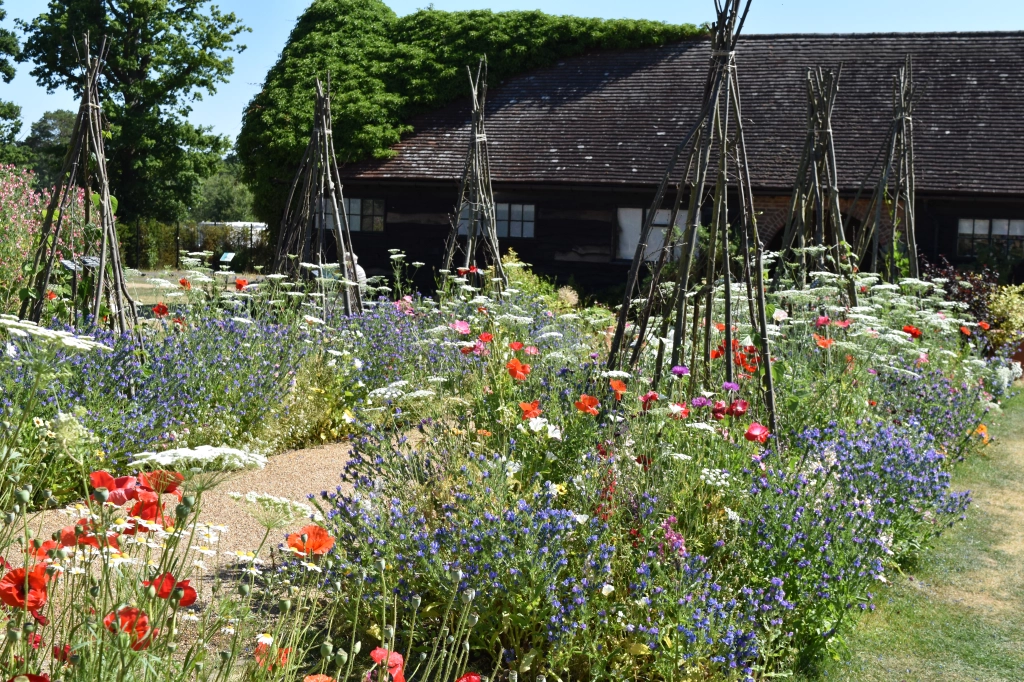
Also in July, a section of the old orchard at Battle Abbey had been designed with strips of annual flowers that emerged like meadow strips out of the turf. It was such an effective idea that I might have to copy it.
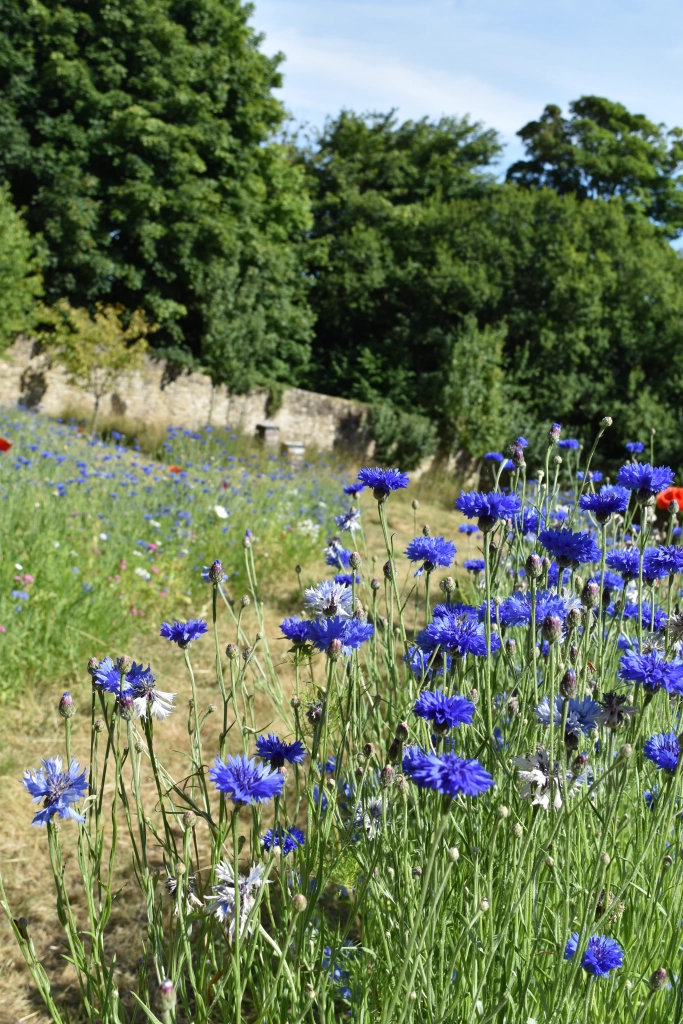
Cornflowers and poppies often feature prominently in these relaxed annual seed sown plantings, sometimes with open-faced Cosmos, an airy, flat-topped flower such an Orlaya or Ammi, and a daisy-like flower, for example Pot Marigold – Calendula. Colors for the planting can either be subdued or vibrant depending on the look that you desire and the plant selection.
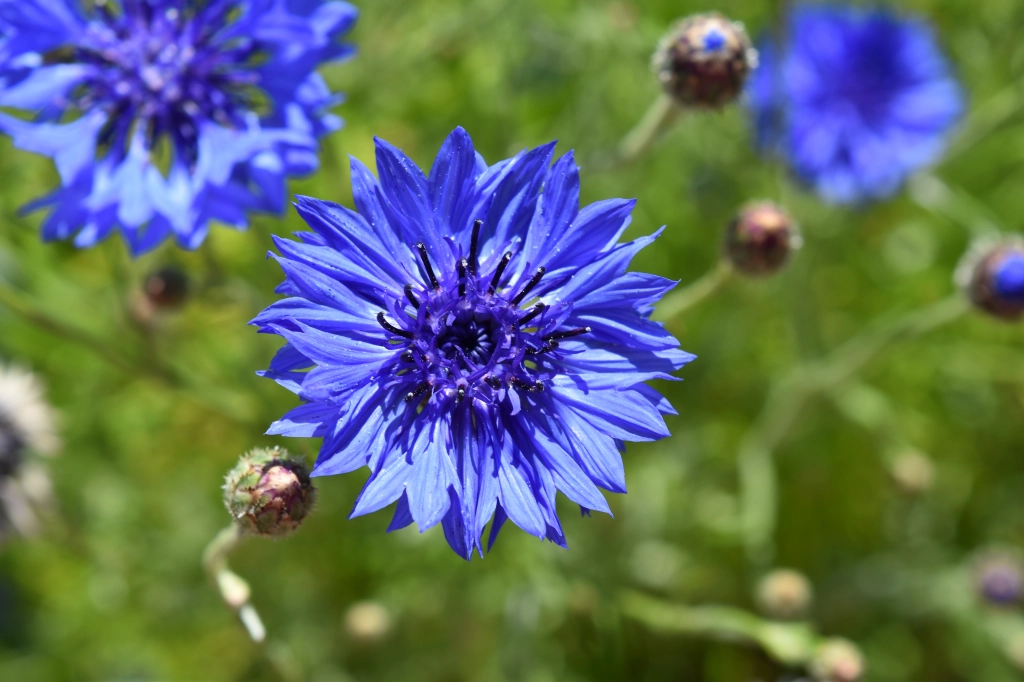
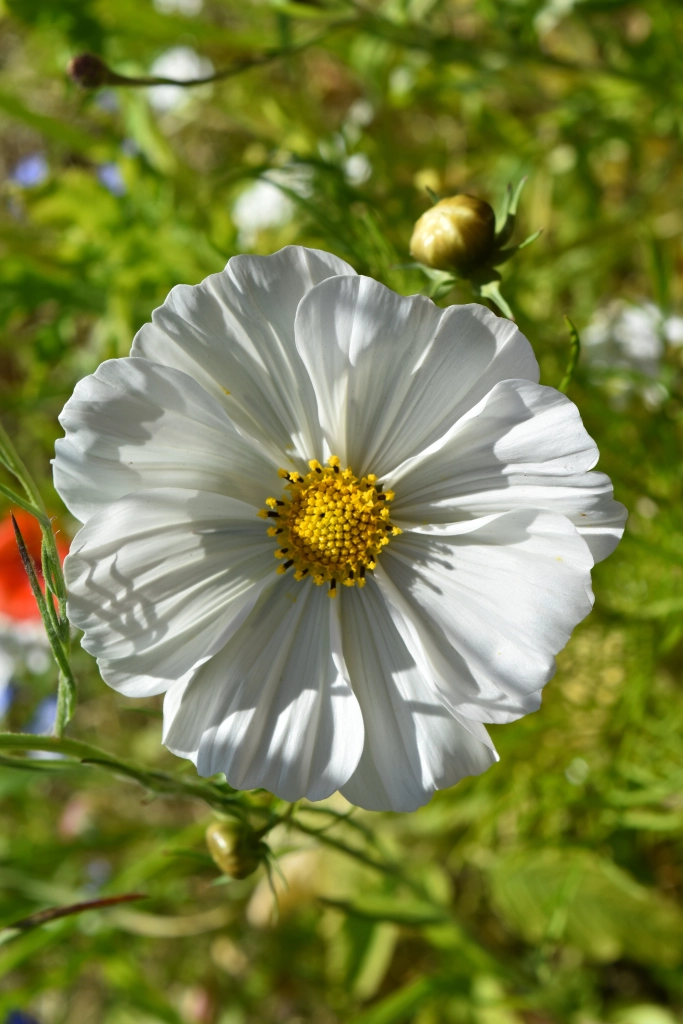
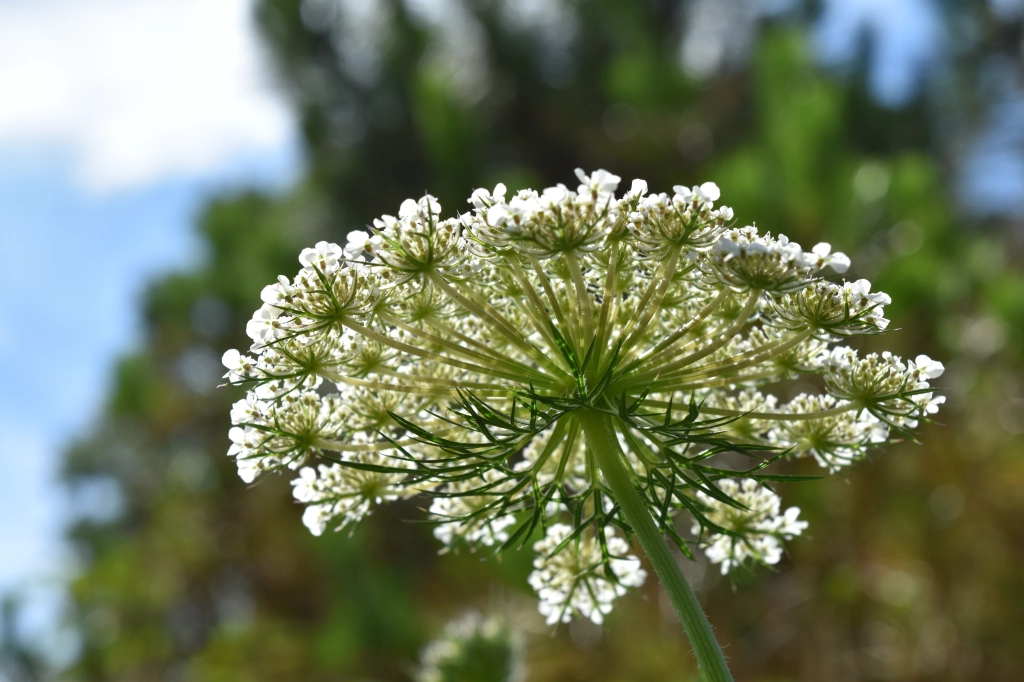
As you ponder your garden plans for next year, and assess what went well this summer. Maybe you can find a little corner that could be left to be slightly scruffier/wild. (Even tiny gardens can have a miniature wilder area). The insects, birds, and mammals that use your garden will thank you for a space to live and breed. Alternatively, your wild garden can be an area that is deliberately planned to look wild.
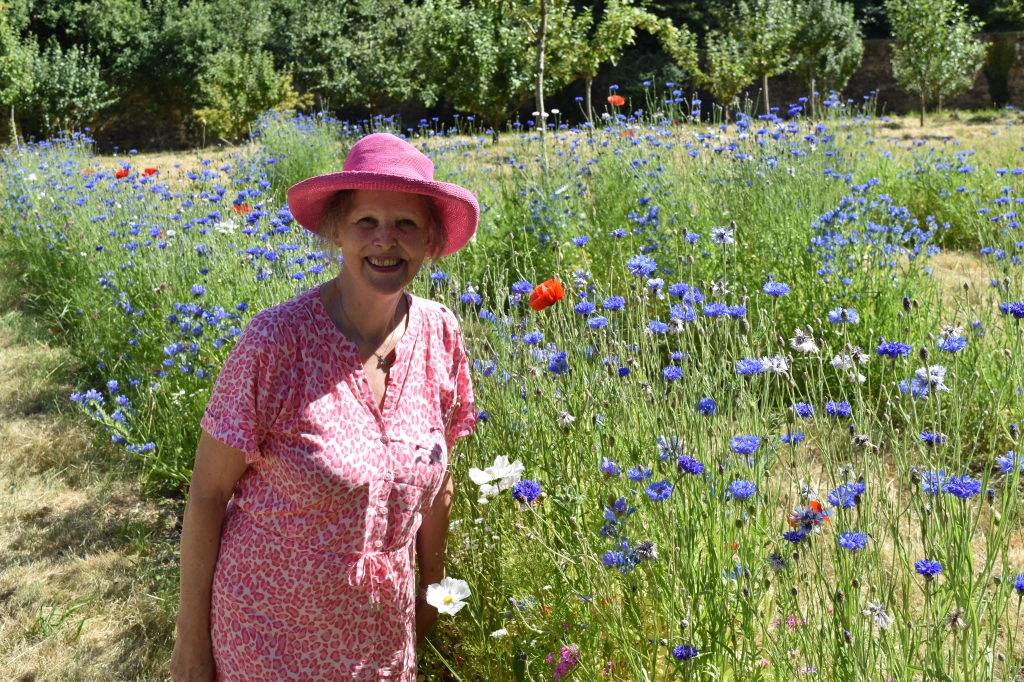
Next month we will continue this wildness theme with a discussion of my favorite self-sowing plants and how to grow them.
If you like this blog – I have a new newsletter that will be coming out once a month. Either subscribe to this blog and please tell your gardening friends. Alternatively visit my website – jennyrosecarey.com and subscribe to the newsletter there. Thank you.
Bye for now,
Jenny Rose Carey




Leave a Reply